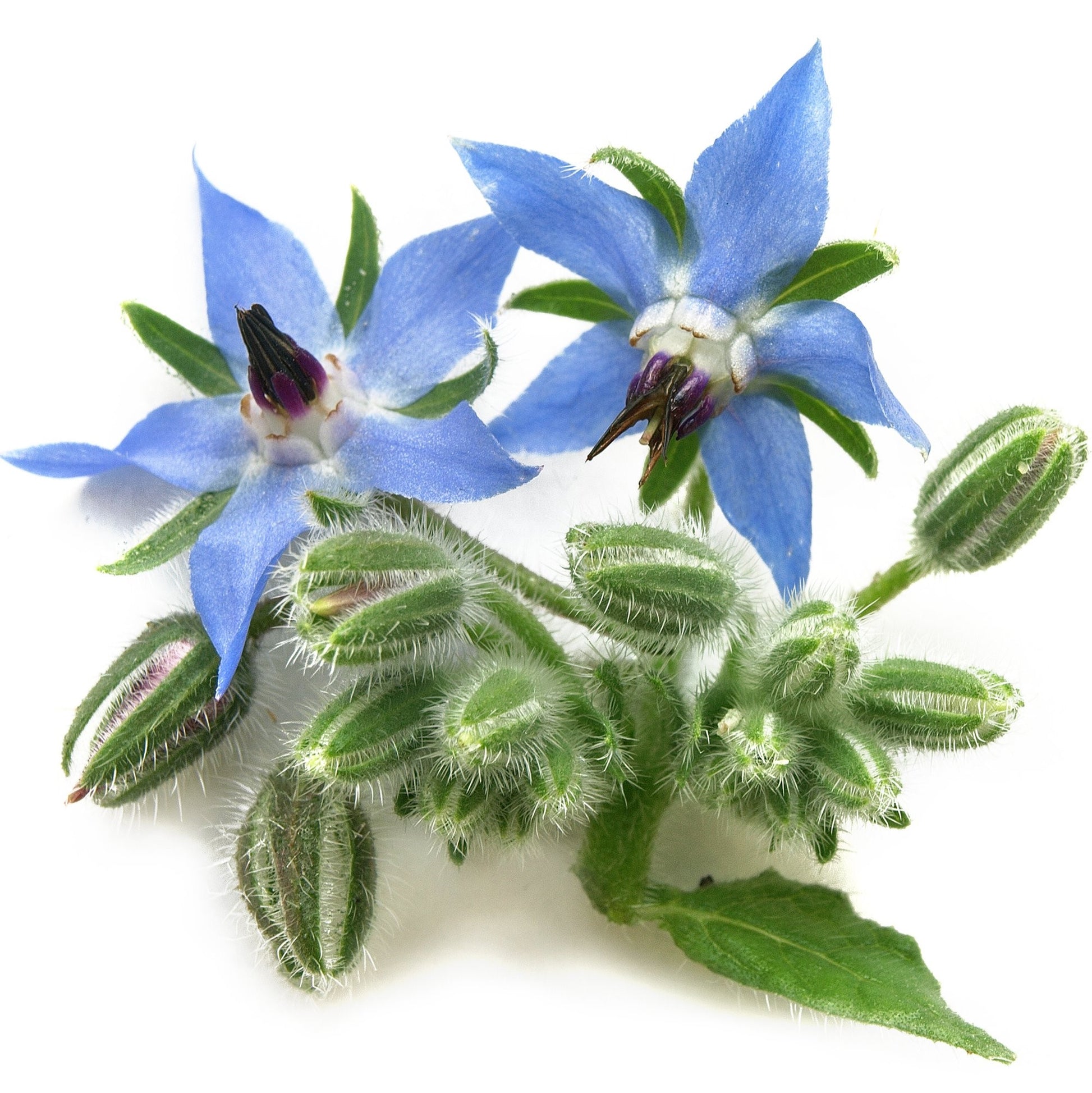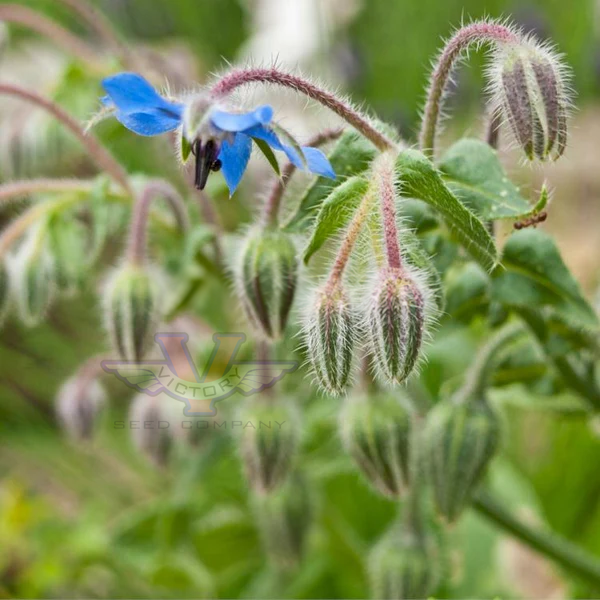Borage
Borage
Couldn't load pickup availability
Borago officinalis
Borage, also known as "Burrage," "Beebread," "Beeplant," and "Talewort," is native to Great Britain, Europe and North Africa but has been naturalized all over the world. Its leaves are oval, pointed, with bristles on both surfaces. The stems are sturdy, ridged, and bristly reaching two to three feet tall and covered with blue, star-shaped flowers; the blooming period is from June into August. Its flowers are attractive to bees as well as other pollinating insects.
The flowers are edible and make an attractive addition to summertime drinks, either floated on the surface or frozen into ice cubes. In times passed, the flowers were preserved and candied for off-season use. Borage is an annual that will self-sow and return year after year in most areas. Each packet contains 1 gram, which is approximately 50 seeds.
Although it has been used as a potherb, the plant material can contain small levels (2 to 10ppm) of pyrrolizidine alkaloids, so modern uses are generally restricted to external applications in the form of poultices or extracts.
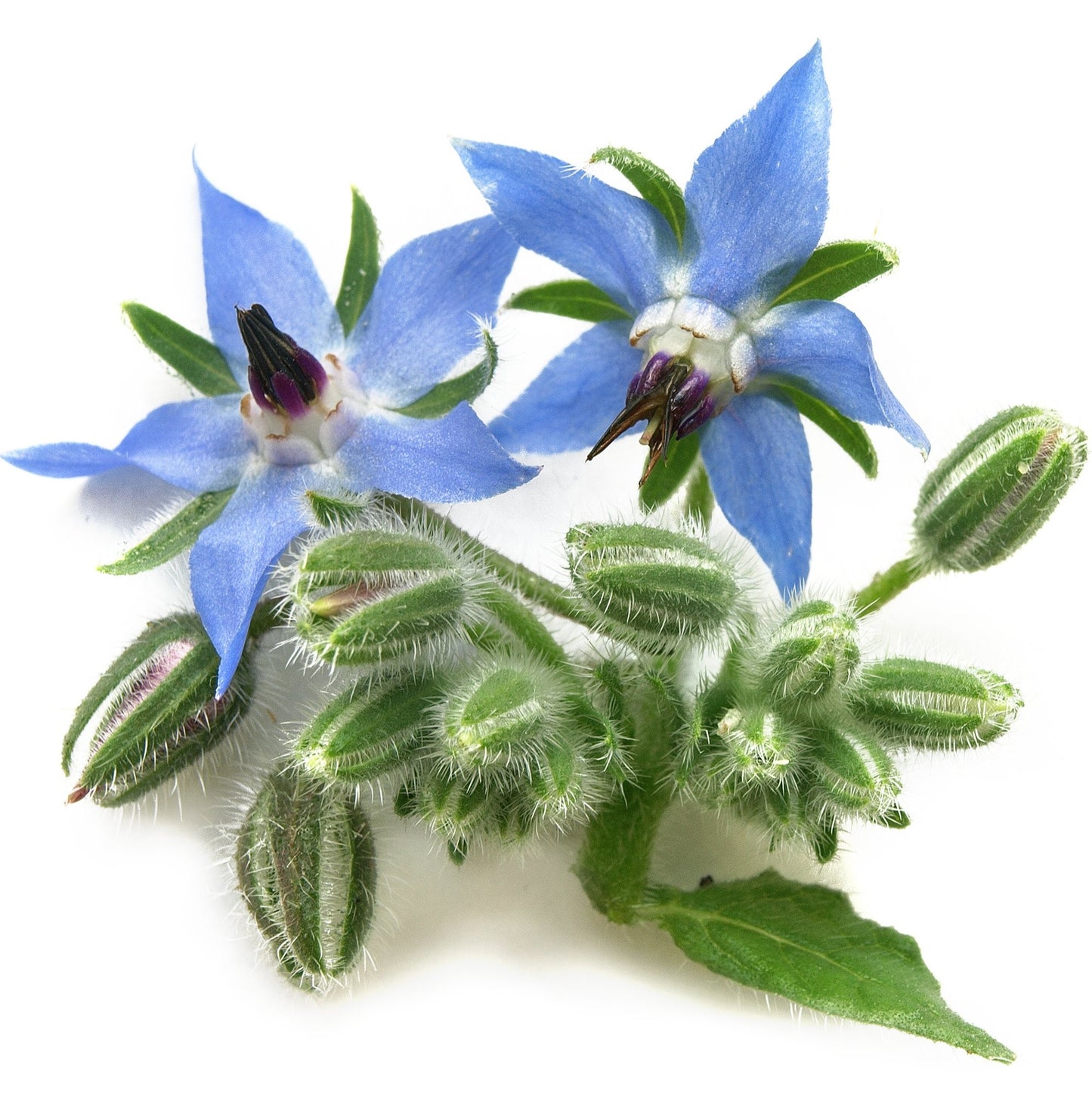
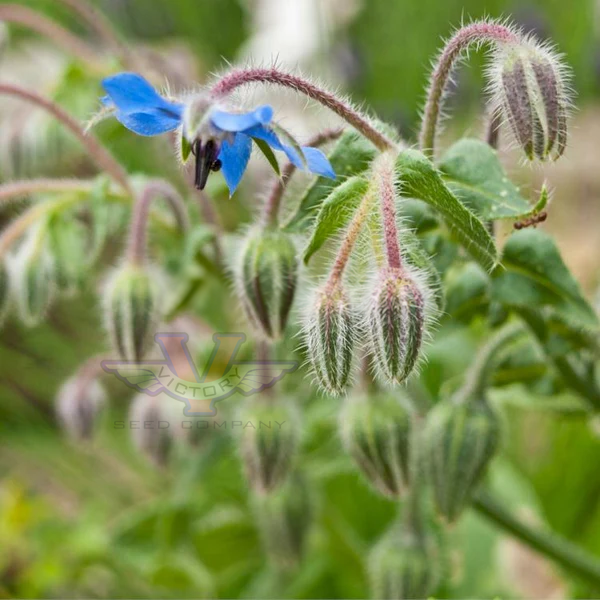
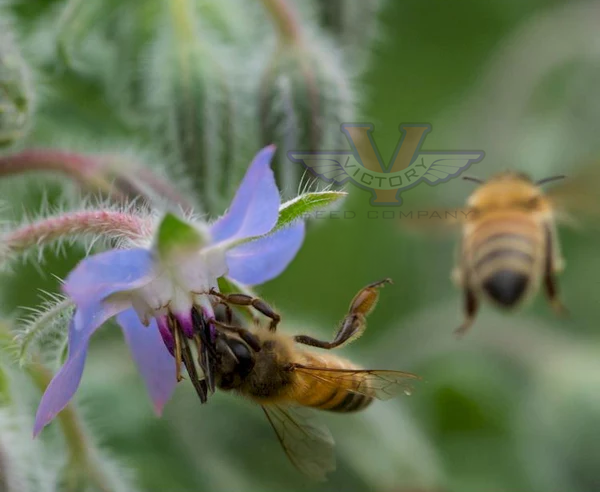
Borage is best grown from seed, as it doesn't transplant well. Sow borage seeds directly in the garden or in pots, planting them 1/4 inch deep and spacing them about 12 inches apart. You can sow seeds in early spring, once the danger of frost has passed.
Germination: Borage seeds typically germinate within 5 to 15 days. Keep the soil consistently moist but not soggy during the germination period.
Watering:
Borage is relatively drought-tolerant, but it performs best when watered regularly. Keep the soil evenly moist, especially during hot and dry periods. Avoid overwatering to prevent root rot.
The Victory Seed Company does not advocate medical self-diagnosis or self-medication. Reference to the medicinal properties of plants are described here for educational and historical purposes only and are not to be construed as a prescription, prognosis or diagnosis for any disease or illness. As with any remedies or medicines, you should consult your personal health care provider before using.
Informational References:
- "A Modern Herbal," Mrs. M. Grieve, 1931, p. 119-120.
- "Handbook of phytochemical constituents of GRAS herbs and other economic plants," James A. Duke, CRC Press, Boca Raton, Florida, 1992.
- "Dr. Duke's Phytochemical and Ethnobotanical Databases," U.S. Department of Agriculture, Agricultural Research Service, 1992-2016.
Explore our vegetable collections:
[ Artichokes | Asparagus | Beans | Beets | Broccoli | Sorghums | Brussels Sprouts | Cabbage | Cantaloupe | Carrots | Cauliflower | Celery | Collard Greens | Corn | Cucumber | Eggplant | Endives | Gourds | Kale | Kohlrabi | Leeks | Lettuce | Mesclun Mix | Mustard Greens | Okra | Onions | Parsley | Edible Pod Peas | Garden Peas | South Peas | Hot Peppers | Mild Peppers | Pumpkins | Radishes | Rapini | Rhubarb | Salad Greens | Salsify | Summer Squash | Winter Squash | Swiss Chard | Tomatillo | Tomatoes | Dwarf Tomato Project | Turnips | Watermelons ]

